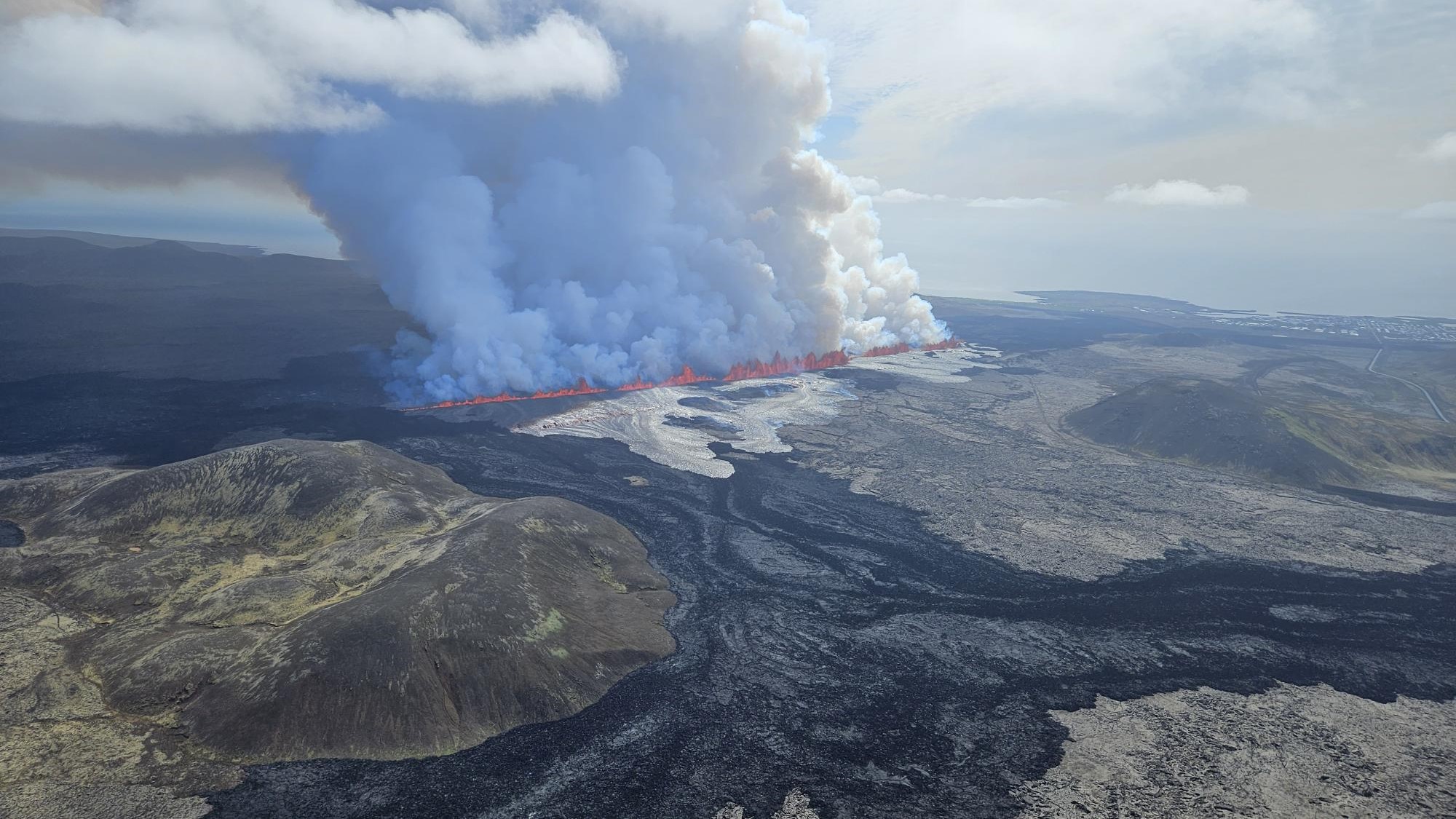
A volcano on Iceland's Reykjanes Peninsula has erupted just three weeks after the last eruption ended, spewing huge walls of lava toward the town of Grindavík.
Iceland's Civil Protection warned residents and emergency responders to be ready to evacuate the town at short notice in a translated statement.
The eruption started just before 1 p.m. local time (9 a.m. E.T.) at Sundhnúkur crater, about 2 miles (3 kilometers) northeast of Grindavík. Rising magma opened a 1.5-mile-long (2.5 km) fissure that is currently throwing lava up to 165 feet (50 meters) into the air, according to the Icelandic Met Office (IMO).
The fissure appears to be growing, IMO representatives said.
This is the eighth eruption on the peninsula since March 2021 and the fifth since December 2023. The last eruption continued for 54 days, from March 16 to May 8, 2024. That eruption produced lava flows that narrowly missed Grindavík and a giant plume of toxic gas that traveled hundreds of miles across northern Europe.
Related: Antarctica is covered in volcanoes, could they erupt?
The recent flurry of volcanic activity in Iceland began on Dec. 18, 2023, following weeks of localized earthquakes, which prompted authorities to evacuate 4,000 people from Grindavík and close the nearby Blue Lagoon geothermal spa. Breathtaking photos showed a wall of lava up to 100 feet (30 m) tall erupting from a huge fissure.
JUST IN: A new volcanic eruption has just started on Iceland's Reykjanes Peninsula, making it the eighth eruption in this area since March 2021. This one comes only 20 days after the last eruption was officially declared over. pic.twitter.com/xU50fgI1tkMay 29, 2024
A second eruption rocked the Reykjanes Peninsula four weeks later, with a lava-spouting fissure quickly reaching Grindavík and destroying three houses. The volcano then erupted for a third time Feb. 8 and again March 16.
The eruptions are part of a 1,000-year cycle of volcanic activity that began in 2021 and could disrupt the Icelandic peninsula for centuries to come. The unrest is caused by two tectonic plates that are being pulled apart. The resulting strain is released in bursts of seismic and volcanic activity, David Pyle, a volcanologist and professor of Earth sciences at the University of Oxford, U.K., previously told Live Science.
"Each eruption releases just a bit more of the stored-up strain, and eventually, when all of that strain has been released, then the eruptions will stop," Pyle said.







